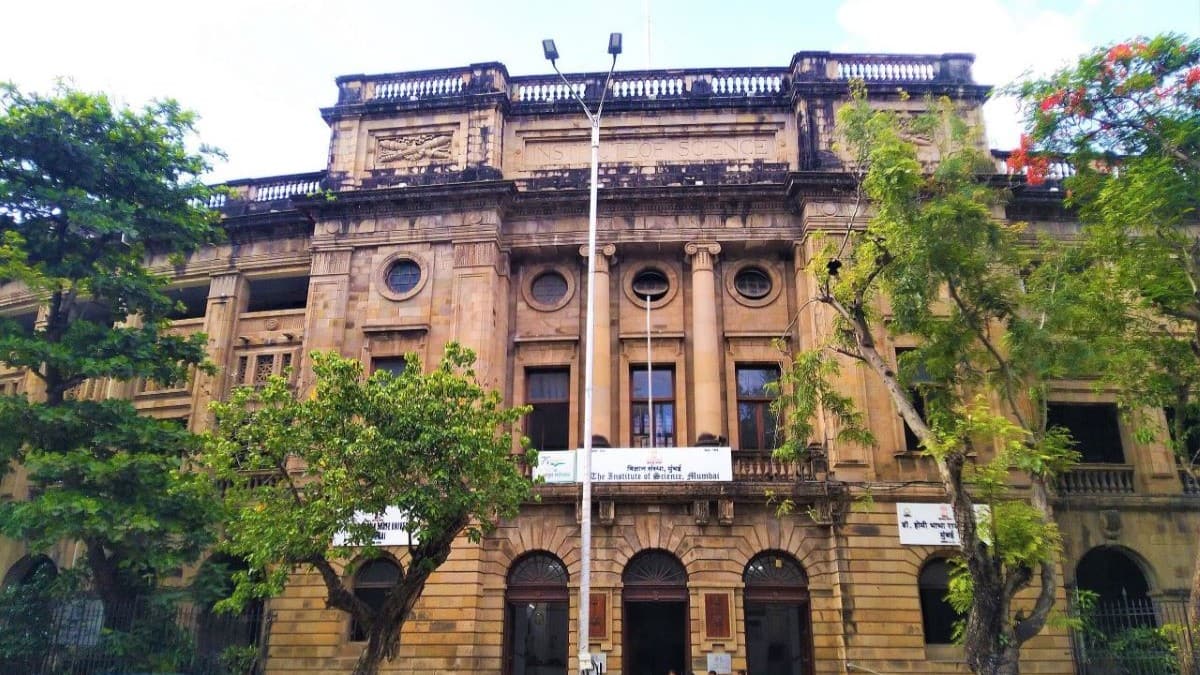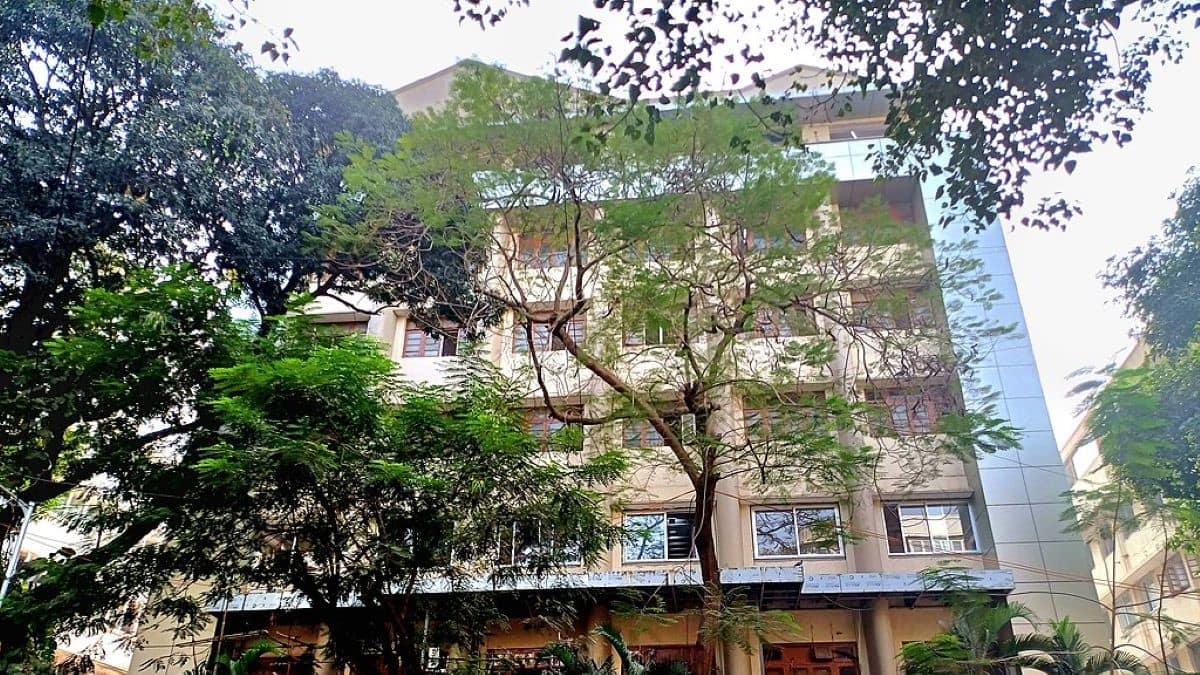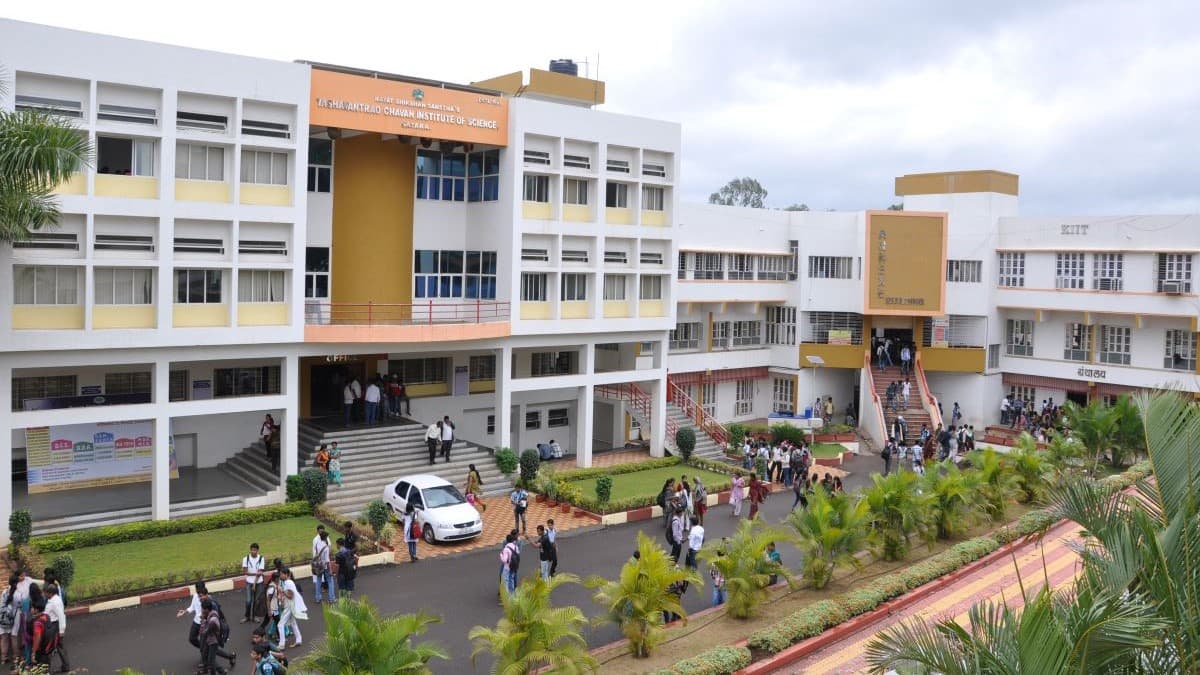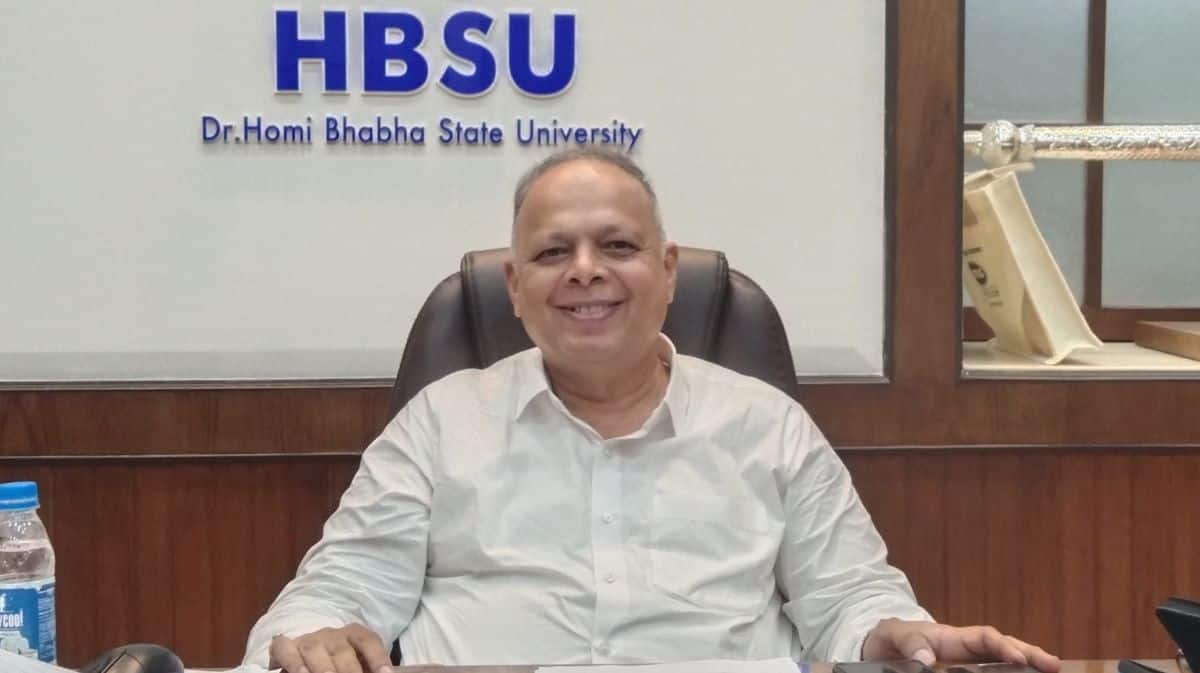As NEP labs, Maharashtra cluster universities increased courses, seats but await government funds
Musab Qazi | June 30, 2025 | 12:31 PM IST | 10 mins read
From Elphinstone, Sydenham to KC College: Maharashtra’s heritage institutes transformed into autonomous cluster universities test the new education policy’s promise, offer courses in AI, blockchain, fintech

MUMBAI: In 2019, four of Mumbai’s oldest higher education institutions – Elphinstone College, Institute of Science, Sydenham College and Secondary Training College – left the University of Mumbai (MU), with which they were affiliated for more than a century, and fused to become Maharashtra’s first ‘cluster’ university, the Dr Homi Bhabha State University (HBSU).
Since then, HBSU has launched several market-driven courses in artificial intelligence and machine learning; cyber security; data science, industrial biotechnology; luxury brand management; fintech and industrial finance and blockchain. It had to increase the intake capacity for certain programmes, such as microbiology, biochemistry and physics, due to heightened demand. There has been around 28% uptick in the combined enrolment despite losing the MU tag.
Maharashtra has seen two more cluster universities come up since and still others are in the pipeline. In each case, the smaller scale of operations has allowed rapid expansion, research growth and collaborations with other institutions. However, concerns about teacher and funds shortage remain and with expansion powered mostly by self-financed courses, the costs have gone up for some students.
NEP and cluster universities
The first three government-run colleges, all located in South Mumbai, were immediately followed by three private ones in the area – KC College, HR College and Bombay Teacher Training College (BTTC). The popular colleges managed by the Hyderabad (Sind) National Collegiate Board, a century-old Sindhi community-run trust which shifted base from the Sindh region to the city after partition, became part of HSNC University.
The state got a third cluster university at Satara in Western Maharashtra two years later. Three institutes of Rayat Shikshan Sanstha, another storied educational organisation established by social activist ‘Karmaveer’ Bhaurao Patil in 1919, parted with Shivaji University Kolhapur and banded together under a new university named after their founder.
The carving out of three smaller state universities was part of an effort from the central government, under the Rashtriya Uchchatar Shiksha Abhiyan (RUSA), to grant greater autonomy to higher education institutes and enable them to offer a multidisciplinary education and research. The state government, too, was keen on the project as it meant easing the immense administrative burden on its large public universities. While RUSA helped create only a few cluster universities across the country before the scheme was wrapped up, Maharashtra got the highest of them.
Also read New Maharashtra body will set common academic framework, calendar for state universities, colleges
Set up around the time when the centre was rolling out the National Education Policy (NEP) 2020, the new institutes found themselves in a pole position to implement the educational reforms. This is because they fit the bill for NEP’s ideal higher education institutes: large multi-disciplinary autonomous bodies instead of disparate affiliated colleges.
Despite some initial jitters, the three institutes have faithfully tried to fulfill their mandate by focusing on enhancing inter-disciplinarity, academic collaboration and research capabilities. The institutes believe that they have been a demonstrable success during this limited run. Thanks to a quicker decision-making process and a greater appetite for innovation, they could diversify their course offerings, increase enrollment and improve research output. The public universities insist that they achieved it without compromising on their responsibility of keeping education affordable and accessible.
It’s a different matter though that one of the key incentives for these institutes’ transformation into varsities, a combined Rs 55 crore grant from the state and central governments promised by RUSA, is yet to arrive. Even as they continue taking new strides, the varsities are also staring at the large proportion of unfilled government-aided teaching posts, which are adding to their financial strain and hindering their development plans.
 KC College, a counstituent college of HSNC University, Mumbai (Image: Wikimedia Commons)
KC College, a counstituent college of HSNC University, Mumbai (Image: Wikimedia Commons)
Cluster Universities: Rapid growth
Among the three, HSNC University has scaled up in the most dramatic fashion. The cumulative number of academic programmes offered by its three constituent colleges has almost doubled, from 57 to 105, while the count of its research centres has jumped from 10 to 22. It also started over 20 new departments and seven schools, covering disciplines as varied as management and real estate, law, performing arts and yoga and wellness. Data science and business analytics, sound engineering and liberal studies are among the new programmes on offer.
The varsity has also increased its teaching capabilities. It now has 225 teachers, up from around 150 in 2020. Those designated as postgraduation (PG) teachers and research guides have multiplied from 23 and 10, respectively, to 55 each.
Starting in the new academic year, the university is adding a school of engineering and technology, offering BTech and MTech in computer science and artificial intelligence. It’s also hoping to add five other HSNC Board institutes in the city – RD National College, MMK College, KM Kundnani College of Pharmacy, Thadomal Shahani Engineering College and KC Law College - to the university. It will soon submit a detailed project report (DPR) to the state government for the inclusion of these institutes.
Last year, the state added the Institute of Forensic Science and the Sydenham Institute of Management Studies and Research (SIMSREE) to HBSU. Around six months ago, it asked the state for an additional parcel of land in the city to expand its academic activities.
Karmaveer Bhaurao Patil (KBP) University, too, came up with a clutch of new programmes such as aviation management and business analytics as well as two Apprenticeship Embedded Degree Programmes (AEDP) in bank management and pharmaceuticals. With an eye on the job opportunities in Pune and the nearby region, the university is also teaching the Korean language. It has enrolled more than 100 new PhD scholars in addition to roughly the same number of doctoral candidates it already had. The institute was also able to attract a batch of PG students from Jammu & Kashmir after getting the university label.
Also read Pune Boom: How 15 private universities reshaped higher education in 'Oxford of the East'
The three varsities were among the first to align the structure and curricula of their courses to the NEP. Having colleges running different educational streams in close proximity has allowed the varsities to offer a large number of multi-disciplinary courses to students. HSNC University, for instance, has a basket of 78 general electives for students to choose from. It’s planning to soon add multi-disciplinary minors as well. HBSU already mandates students at almost half of its programmes to pick a minor subject from outside their faculty. At KBP University, the learners can choose up to 30% of courses from areas other than their specialisation.
 Yashwantrao Chavan Institute of Science (YCIS), a constituent college of KBP University, Satara (Image: YCIS)
Yashwantrao Chavan Institute of Science (YCIS), a constituent college of KBP University, Satara (Image: YCIS)
Research and specialisations
According to institute officials, the single biggest benefit of being a varsity is their ability to take prompt decisions. “In traditional universities, a lot of time is consumed as the proposals move from one authority to another. Now, being on the same campus, we can get things done within days. The tasks that took six months can now be completed within a fortnight,” said Dnyandev Mhaske, vice chancellor (VC) of KBP University.
HBSU VC Rajanish Kamat said that being a smaller university allows them to better focus on research and develop certain specialisations. “The existing universities are mostly concerned with affiliating business. They are growing horizontally, but our mandate is to grow vertically. Being located in Mumbai, we can focus on things like finance and AI. It wasn’t possible earlier, because the standalone colleges didn’t [have] the varsity’s access,” he said.
Getting branded as varsity has indeed opened new doors for the college collectives. HSNC has received research projects from entities such as the International Atomic Energy Agency (IAEA), British Council and the union textile ministry. A memorandum of understanding (MoU) has been inked between HBSU and Spain’s Vigo University. KBP University could join hands with banking and insurance firms to offer on-job training to its students.
The clustering of colleges has also paved the way for better collaboration and academic exchange between the faculty and departments. The leaders have been able to have a more meaningful involvement in designing courses and curricula. The staff got more leadership and career progression opportunities, as they could become deans and committee chairs at a varsity.
Hemlata Bagla, VC of HSNC University, said that in the run up to becoming a university she had to familiarise herself with the course content of all the programmes. She then had detailed discussions with faculty members of various departments on the ways to revamp their syllabi. The courses were then upgraded with more relevant and interdisciplinary aspects – a BA Hindi course would have elements of mass media, while economics and information technology (IT) students would learn each others’ subjects. “I was completely hands-on during this process,” she said.
Also read GLC Mumbai: Asia’s oldest law college struggles with falling academic standards, fund crunch
The VC said that their credit framework has been replicated by several institutes.
One of the hallmarks of administration at the new universities is their student involvement in the decision-making process. HSNC University, back in 2018, had formed an 80-odd member student advisory board tasked with coming up with fresh ideas on how their courses should look. At HBSU, students are members of statutory bodies, with their feedback driving the decision-making.
The colleges have been able to duck some of the chronic problems of their earlier universities, such as result delays. The sharing of infrastructure and facilities has resulted in a more efficient utilisation of resources. Admissions and teacher promotions are more regular.
Maharashtra Cluster Universities: Fund, fees
While they have largely had a smooth sailing so far, the young universities have their share of challenges – balancing social equity in education while running the cost-intensive new-age programmes being the foremost. To make matters worse, a sizeable portion of aided teaching posts — almost half in KBP colleges’ instance — have been lying vacant at the constituent colleges, thanks to a freeze on hiring during the past decade. The newly-created administrative posts have become an added fiscal burden.
The RUSA component which enabled the formation of the three cluster universities had a Rs 55 crore funding provision for the new institutes, Rs 33 crore of which was to be given by the centre. In fact, in order to be eligible for RUSA funds, HSNC University had even purchased around 20 acres of land in the nearby coastal town of Alibag.
However, even as RUSA has been replaced by another scheme, the Pradhan Mantri Uchchatar Shiksha Abhiyan (PM USHA), the money hasn’t come. A former official with the state project directorate for RUSA told Careers360 that the funds are unlikely to come now.
The universities are now relying on the income generated from the new self-financing courses for their additional expenditure. The temporary staff, appointed on a clock–hour basis, is filling in for full-timers.
While Kamat says that HBSU needs at least 50% more staff, he insists that the state has been allocating resources to the university. The university has recently formed a section 8 (non-profit) company, HBSU Research and Innovation Foundation, to generate corporate social responsibility (CSR) and government funds for their start-ups.
 HBCU VC Rajanish Kamat (Image: Musab Qazi)
HBCU VC Rajanish Kamat (Image: Musab Qazi)
Bagla, on the other hand, said that they are expanding gradually to remain financially viable. “Not all courses are equal. The profitable ones keep the others afloat,” she said. Mhaske said that they are yet to make a self-sufficiency plan and are hoping for more state grants.
However, the three universities assured that they are not passing the financial burden on to the students and continue catering to the students from marginalised sections. While HSCN University has doubled the annual fees of its aided programmes from Rs 10,000 to Rs 20,000-25,000, it points out that its programmes are still inexpensive compared to other private institutions. KBP University increased the costs of only a handful of courses such as aviation and forensic science by 5-10%.
More cluster universities
With the evident success of the three clusters, the Maharashtra government last year framed a fresh policy to create more such universities. However, so far only one additional cluster, Warna University in Kolhapur, has been approved. While a few more proposals are still being reviewed, many of the prominent colleges are yet to join.
According to Bagla, this is because the educational organisations have a fear of ‘unknown’. They are wary of the government control on the vice chancellor appointment and being saddled with an “outsider” as the head. “The college trustees need to groom a strong person for the position [if they are seeking to be a university]”, she said.
Kamat, on the other hand, believes that the institutes are still weighing their options. “The NEP has just come and things are in a transition. The colleges are in a situation of wait-and-watch. Many options are available to them,” he said.
Follow us for the latest education news on colleges and universities, admission, courses, exams, research, education policies, study abroad and more..
To get in touch, write to us at news@careers360.com.
Next Story
]Kanyashree University planning more social science courses over next 5 years: VC
Kanyashree University, West Bengal’s second women-only university, operates without a permanent campus or faculty, but has quadrupled its student strength; its VC talks about new courses, placement struggles, expansion plan
Pritha Roy Choudhury